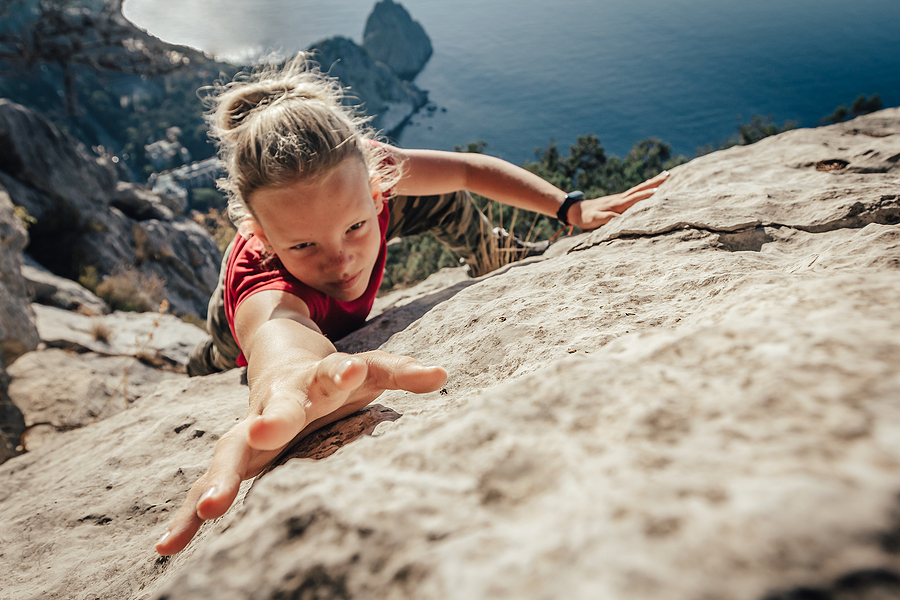
Are you not a powerlifter or vaguely interested in powerlifting psychology? Fear not; the article below mainly uses the sport of powerlifting/weightlifting as an opportunity to look at some classic sport psychology concepts from a different angle. Read it before judging it!
Powerlifting Psychology – Introduction
Powerlifters are on a constant mission to find out just how strong they are (or could be). For those who are not familiar with this sport, let me give a quick overview. Powerlifters attempt to lift the heaviest weight possible on three different lifts (squat, bench press and deadlift). The aim is to reach their one-rep max (the heaviest they can lift in a single attempt) within three attempts.
The all-or-nothing nature of lifting creates a lot of mental challenges. At the end of the day, in powerlifting, you either make the lift or you don’t. This can lead to a lot of all-or-nothing / black-or-white thinking. Powerlifters often speak about the fear of “Bombing Out” (failing to make one successful lift in three attempts). The impact of missed attempts is often exponential. In other words, for the mentally vulnerable, one missed attempt can often snowball into three.
Falling Down The Rabbit Hole
After missing the first attempt, lifters become vulnerable to “falling down the rabbit hole”. The first attempt often sets the tone for the following attempts. It shouldn’t, but it does. There are many types of pressure, but one is ‘reduced opportunities’.
The stakes become much higher, and our perceived importance of having a successful next lift dramatically increases. This often leaves lifters focusing too much on outcomes/results. In doing this, the processes they need to be focusing on to get those outcomes can be neglected.
Preempting Thoughts Ahead of Time
Getting “hooked” is where our thoughts and emotions hijack our actions in an unhelpful way. One of the best ways to prepare for the threat of getting hooked is to identify what these thoughts might be preemptively. Basically, what am I likely to think in these situations and what to do about it?
Our mind is a reason-giving machine, the best ever created. Because of this, we’re really good at surviving. But we’re also really good at talking ourselves out of doing anything outside of our comfort zone. To help a powerlifter preempt competition day thoughts, we might ask:
- “As you enter the venue, how is your mind likely to try and talk you out of doing this?”
- “What is your mind likely to tell you as you approach the bar?
- “It is possible you might miss the first lift. What is your mind likely to say when that happens?”
- “When you approach the bar for your third and final attempt, your mind is going to generate a lot of objections. What do you think it’s likely to say?”
Predicting the time and frequency of these competition thoughts can also be beneficial:
- “How many times do you think your mind will tell you this before you approach the bar?”
- “When will your mind start telling you all these things?
- “How many times will your mind say this to you throughout the entire day?”
What To Do About This?
After identifying these thoughts and when we’re likely to experience them, we can take the final step, which is to name them. Naming uncomfortable thoughts brings a sense of familiarity so they’re not as frightening on competition day, creating a bit of distance between yourself and those thoughts. Some great examples include:
- “There’s my mind reason-giving again.”
- “There’s the ‘I’m not good enough’ story.”
- “The ‘What if mess up” thought is back.”
So, a big part of the work we do at Condor Performance is in helping lifters handle these challenging situations and the associated thoughts more effectively. That is, by reducing their impact on performance.
Flow and Trusting Your Body
Elite lifters often talk about being in the zone when they compete. The scientific term for this is flow. Flow State is when we are so intensely present in what we are doing that time and distractions appear to vanish. In a state of flow, athletes describe feeling extremely calm and relaxed but immensely focused on the task at hand as though they are in a ‘trance-like state’. During flow, time seems to slow down, and there isn’t necessarily a lot of evident thinking. The athlete is totally and utterly reliant on their body to perform on autopilot. It is during this state that athletes find themselves performing at a higher level than they usually would.
Get Out Of Your Own Way
At Condor Performance, we often talk about getting the head out of the way so the body can do what it already knows how to do, so we see a lot of value in the concept of flow. If you ask any elite lifter what they think about in the moments before a competition lift, you’re likely to get the response, “Absolutely nothing”. The best powerlifters in the world trust that their body knows what to do. With enough training (and trust in their training program), they can go to competitions and consistently enter a state of flow right before they go to lift by engaging in simple mindfulness exercises such as deep breathing.
Powerlifting Psychology: Visualisation
Visualisation in powerlifting is becoming more and more popular as athletes begin to see the benefit of mental rehearsal on performance. For this to work, mental rehearsal needs to be as specific as possible, covering as many details of the competition day as possible, from the actual lift itself to the sound and temperature of the venue to the feeling/sensation of clothes and equipment on the body during the warm-up lifts.
When visualising, we must both set the scene and engage all of our senses. Lifters might want to visualise the different aspects of their entire competition day, including weigh-in, waiting around, seeing the audience for the first time, loading and unloading weight, warm-up attempts and hearing the commands for their actual lifts.
However, one trap lifters often fall into is only rehearsing successful lifts, often for fear of thinking about how things could possibly go wrong. This goes back to preempting – lifters must preempt and visualise what an unsuccessful lift will look and feel like, how they’re likely to respond emotionally and cognitively and rehearse how they want to respond to this and how they might coach themselves through it. This creates a sense of familiarity with unsuccessful attempts so that they don’t come as such a surprise on competition day and allows us to pre-plan our response so we know exactly what to do if it does happen.
Getting “Stuck”
One of the most challenging mental hurdles lifters discuss is getting “Stuck”. When a lifter sees no progress or doesn’t see progress at the speed they expect, they’ll often label themselves stuck. Something important to keep in mind is that there are many reasons why a lifter may physically plateau. Still, it is actually our cognitive and emotional response to this physical plateau that often exacerbates its duration. Our default response to seeing minimal to no progress includes thoughts of self-doubt, diminished confidence in our ability, and questioning whether or not all the work we are doing will be worth it. When a lifter becomes hooked by these thoughts, this often perpetuates the cycle of minimal progress.
How To Get “Unstuck”
It can be really beneficial for lifters who have become stuck, physically and/or mentally, to reflect on what life values they are fulfilling as human beings (not necessarily as an athlete) that initially motivated them to pursue the sport and have kept them there up until now. Rather than looking at training through a purely athletic lens, we want to help them identify how lifting contributes to the individual living a rich and meaningful life and through which of their life values this occurs. Many of the values that arise include:
- Living a healthy lifestyle
- Self-discipline
- Competing with Others
- Learning new Skills
- Attempting new challenges
- Never giving up
- Being responsible for my actions
- Feeling good about myself
- Having a sense of accomplishing
- Striving to be a better person
Shifting the lens on training from better athletic to better human allows for the rediscovery of the things an athlete truly values in life and how they live in accordance with these values through their training (regardless of their results). This can serve as an internal driving force through prolonged periods of a plateau (perceived or actual) and is a process that can certainly help a lifter become “unstuck”.
Powerlifting Psychology; Conclusion
Thinking about all the things that could go wrong isn’t something to be afraid of. When we expect and embrace the full range of emotions and thinking competition day brings about, they often seem a lot less threatening, and we’re giving ourselves the best chance to respond in a more helpful way.
Acknowledge that we can’t significantly change the way we think and feel, and therefore, the goal of the work we do is to minimise the effect of these experiences on performance. And if you (or someone you know) want help with any of this, get in touch.


